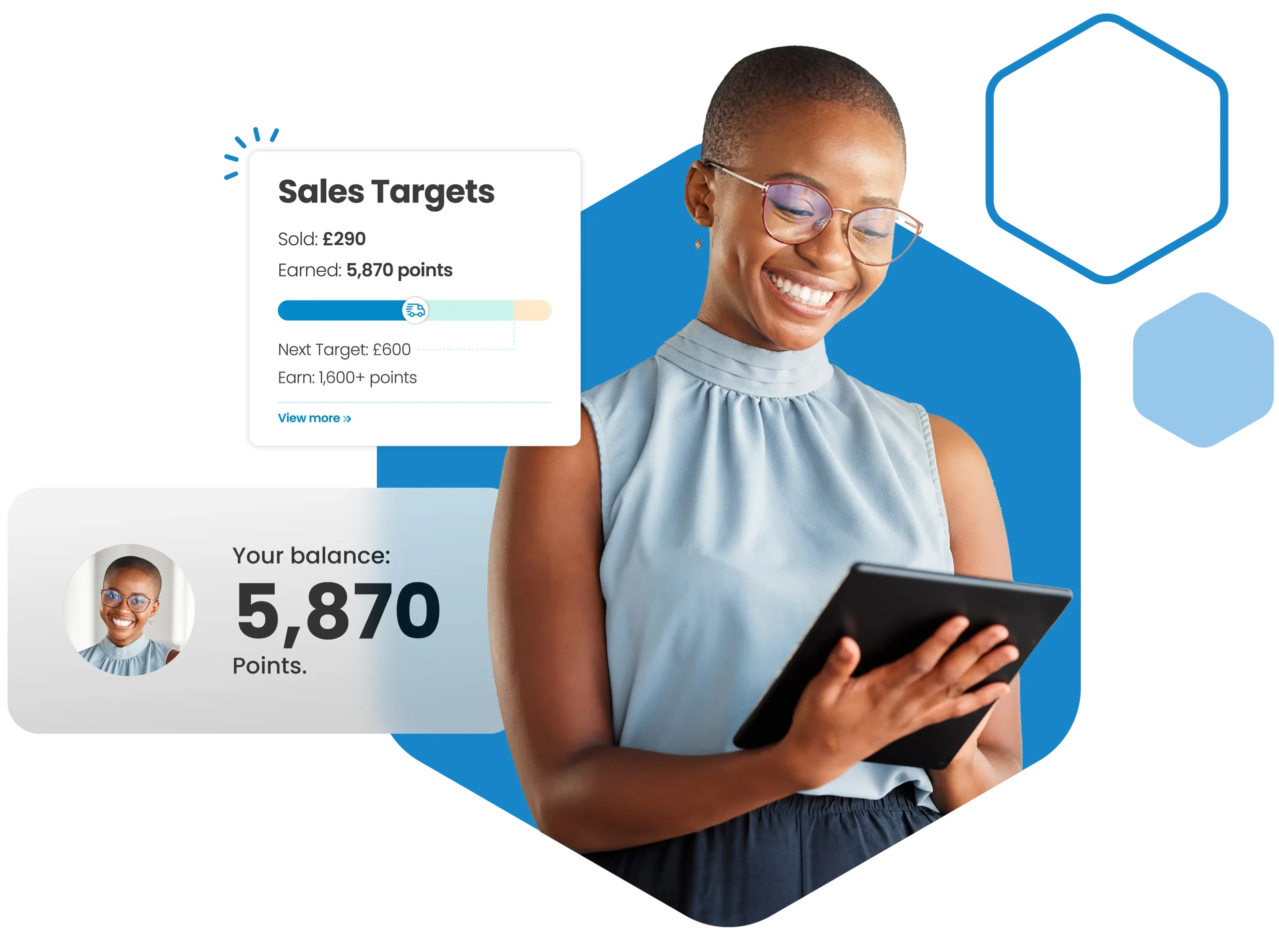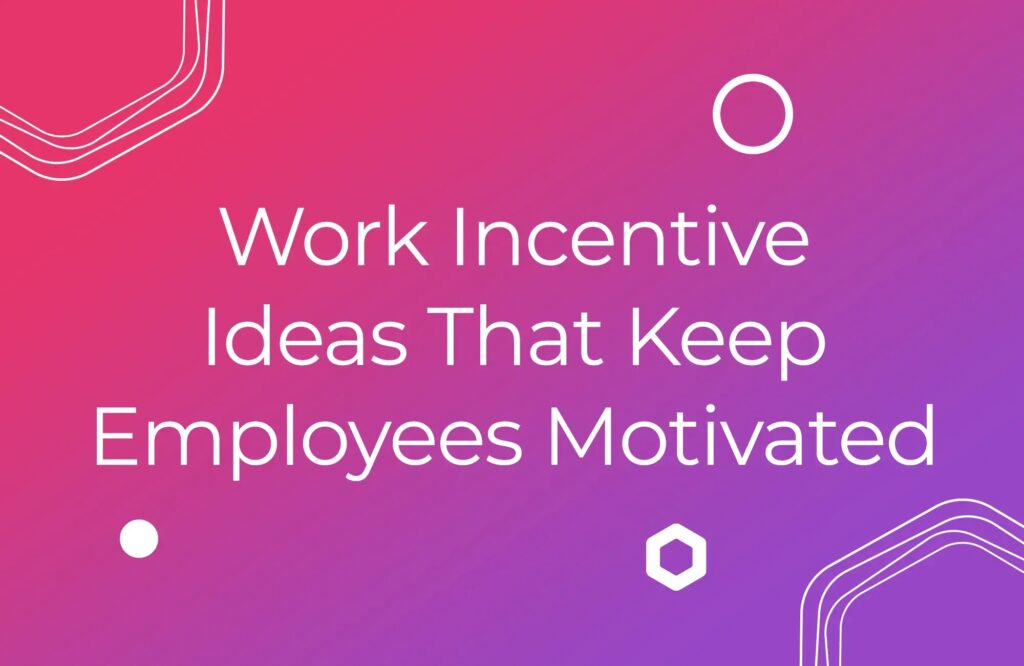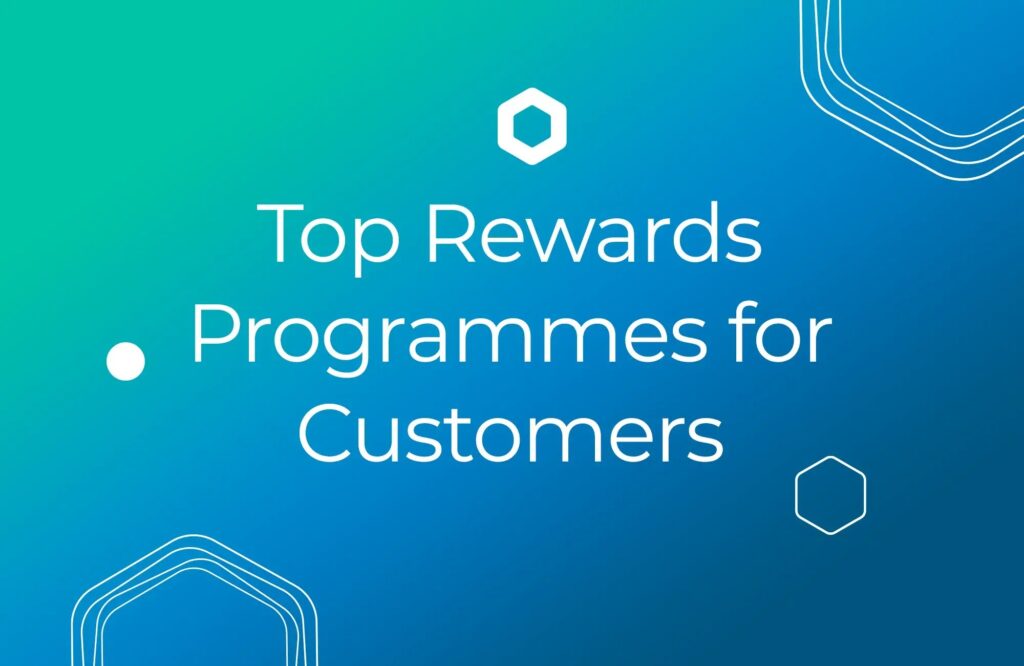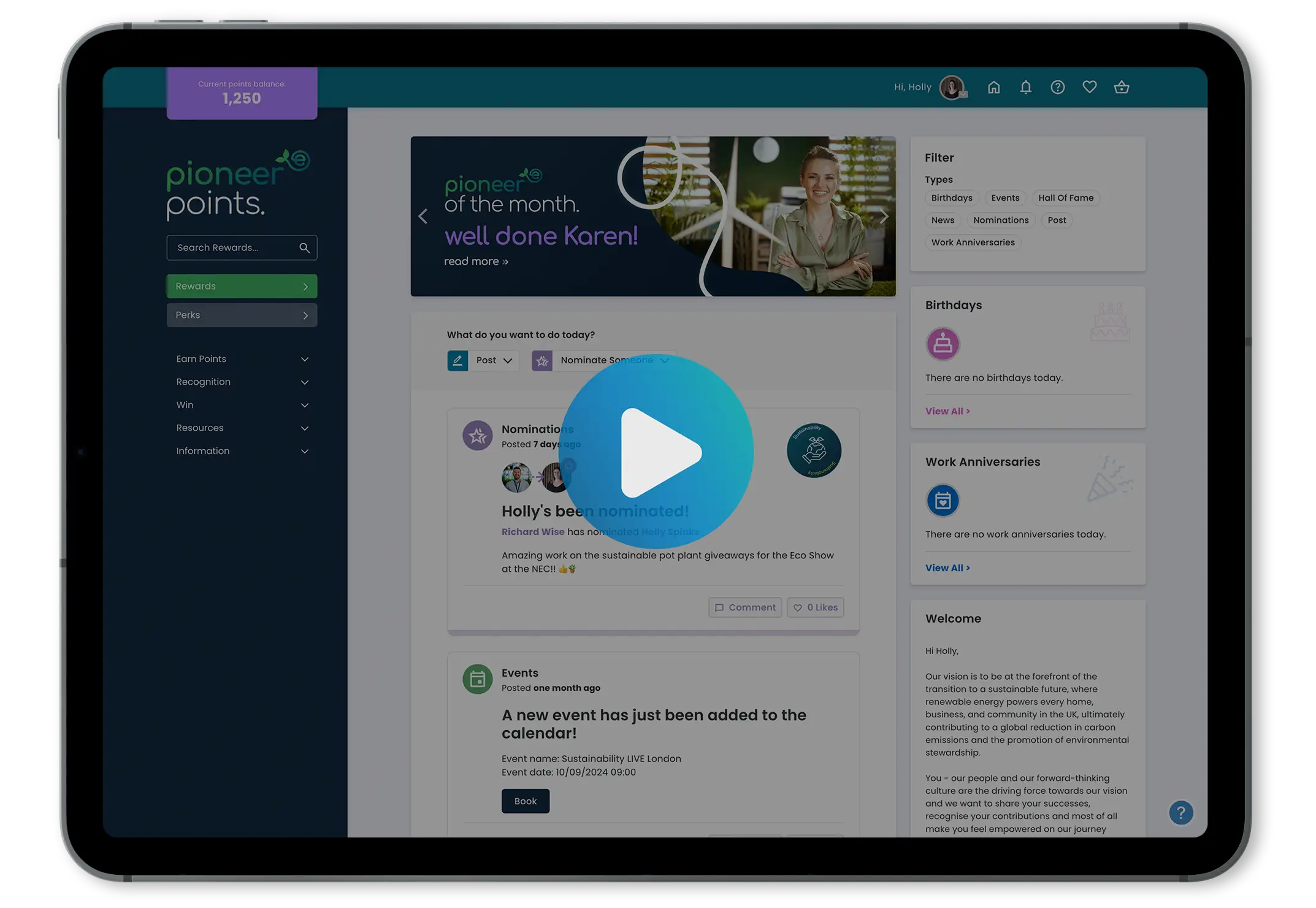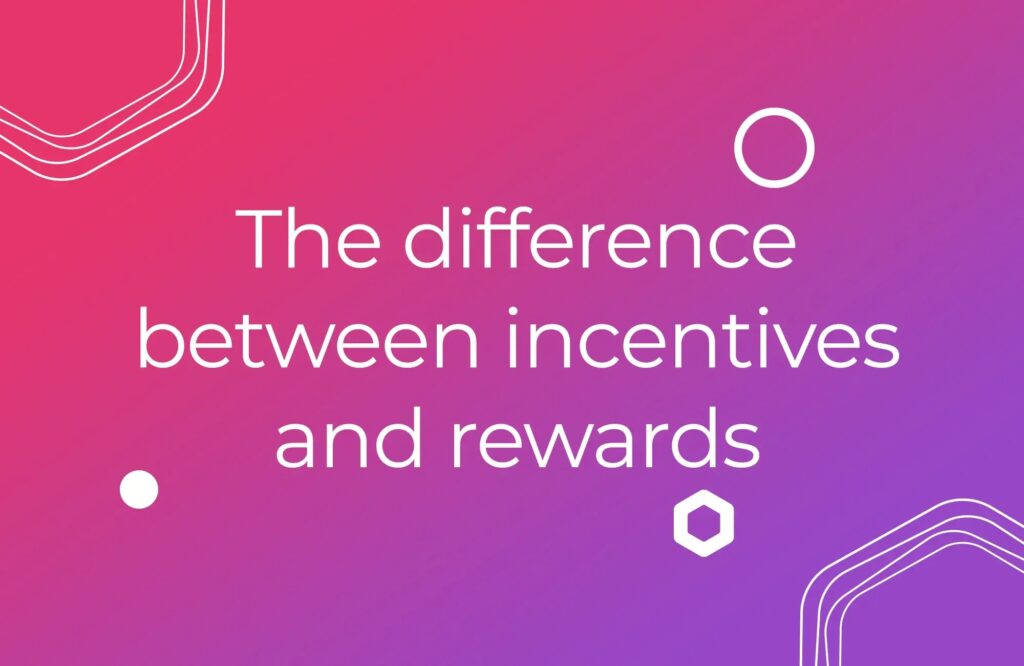


Two important tools in fostering a motivated and engaged workforce are incentives and rewards. But while they may sound similar, they actually serve different purposes and have different effects on employees. So understanding these differences is vital if you want to build a positive and productive workplace.
Here we’ll explore what sets incentives and rewards apart, how each influences employee behaviour and why they matter in building a motivated and satisfied team.
By grasping these distinctions, you can tailor your engagement efforts to inspire employees, fostering a working environment where everyone can thrive.
Skip to:
The difference between incentives and rewards
The fundamental difference between rewards and incentives lies in their timing and purpose: a reward is a tangible item or recognition given to an employee after they have achieved a specific goal or exhibited desired behaviour, serving to acknowledge and celebrate their accomplishment.
In contrast, an incentive is a motivating factor offered in advance to encourage employees to strive towards and achieve those goals or behaviours.
For instance, the promise of a bonus for exceeding sales targets acts as an incentive, motivating the employee to perform better, whereas the actual bonus given after surpassing the target is the reward for their hard work.

Incentives
Incentives are motivational tools used to encourage employees to achieve specific goals or objectives. They are typically offered in advance, creating anticipation that drives employees to focus on the desired outcome.
Incentives are often time-bound, requiring employees to meet certain criteria within a set period.
According to PayScale, 51% of sales professionals stated that earning potential had a major influence on their job satisfaction.
Typical characteristics of incentives
- Prospective motivation: Incentives are offered before the achievement, aiming to influence future behaviour.
- Time-bound: They usually come with deadlines to create a sense of urgency and focus.
- Goal-oriented: Incentives are tied to specific objectives or actions that align with organisational goals.
Some examples of incentives
- Sales targets: A bonus for meeting or exceeding sales goals within a quarter.
- Performance milestones: Extra holiday days for completing a major project ahead of schedule.
- Monthly top performer: Points mean prizes with incentives on offer for selling particular products.
The benefits of incentives
- Increased motivation: Incentives provide a clear reason for employees to strive towards specific goals.
- Enhanced focus: Time-bound incentives help employees prioritise their efforts towards meeting deadlines.
- Improved performance: Goal-oriented incentives can lead to higher productivity and better performance outcomes.
- Short-term urgency: Incentives create a sense of immediacy, driving employees to act promptly and efficiently.
Top tips on implementation
- Set clear goals: Define specific, measurable, achievable, relevant, and time-bound (SMART) goals for employees.
- Communicate clearly: Ensure employees understand the incentives, criteria for eligibility and the time frame involved.
- Diversify incentives: Offer a mix of monetary and non-monetary incentives to cater to different motivations.
- Regular monitoring: Continuously track progress and provide feedback to keep employees motivated and on track.

Rewards
Rewards are given to employees as recognition for their service, performance, effort, achievements or behaviour, after an action has taken place.
They can consist of tangible items or memorable experiences employees earn by meeting established goals, delivering outstanding work or collaborating effectively.
The key purposes of rewards
- Recognition: Rewards acknowledge the contributions and efforts of employees, highlighting their value to the organisation.
- Motivation: By recognising achievements, rewards inspire employees to maintain or improve their performance.
- Engagement: Reward schemes can enhance employee engagement by fostering a sense of belonging and appreciation.
- Retention:Effective reward programmes can help retain top talent by making employees feel valued and satisfied in their roles.
Implementing reward systems
To effectively implement a reward scheme, managers should consider the following:
- Clear criteria: Establish clear and measurable criteria for earning rewards to ensure transparency and fairness.
- Diverse options: Offer a variety of rewards to cater to different employee preferences and motivations.
- Timely delivery: Provide rewards promptly after the achievement to maintain the connection between performance and recognition.
- Consistent review: Regularly review and update the reward system to ensure it remains relevant and effective in motivating employees.
The benefits of rewards
- Boosts morale: Recognising and rewarding employees’ efforts can significantly improve their morale and job satisfaction.
- Enhances performance: Regular rewards can drive higher levels of performance as employees strive to achieve recognition.
- Promotes positive behaviour: Rewards reinforce desired behaviours that you determine, creating a positive work environment and culture.
- Increases loyalty: Employees who feel appreciated and rewarded are more likely to remain loyal to the organisation.

Examples of incentive rewards
A performance-based bonus is a classic example of an incentive reward that combines the motivational aspect of an incentive with the tangible recognition of a reward.
Here’s how it works:
The incentive
The company announces at the beginning of the quarter that any sales rep who exceeds their sales targets by 20% will receive a substantial bonus. This promise of a bonus acts as an incentive, motivating the sales team to push beyond their usual performance levels. The potential for a financial reward encourages employees to put in extra effort, strategise more effectively, and work in a more effective way to close more deals.
The reward
At the end of the quarter, the sales results are reviewed. Reps who have met or surpassed the 20% increase in sales targets receive the promised bonus. This reward is a tangible acknowledgment of their hard work and achievement. It serves to not only compensate them for their efforts but also to recognise their success in meeting the company’s goals.
The different types of rewards and incentives
Reward types
 Monetary
Monetary
- Bonuses
Additional financial compensation awarded for exceptional performance or achievement of specific goals. Bonuses can vary in size and frequency, ranging from one-time performance bonuses to periodic incentives tied to achieving targets or milestones. - Salary increases
Raises in base pay to acknowledge long-term contributions or higher levels of responsibility. Salary increases may be given annually, upon promotion or as part of performance reviews to reflect the employee’s growing skillset and value to the organisation. - Profit-sharing
Distribution of a portion of company profits among employees as a reward for their contributions. Profit-sharing plans can align employees’ interests with the company’s success and promote a sense of ownership and teamwork.

 Tangible treats
Tangible treats
- Gifts
Physical items such as electronics, gift cards, or luxury items given to employees as tokens of appreciation. Gifts can range from small gestures for everyday achievements to more substantial rewards for significant milestones or accomplishments. - Merchandise
Branded company products or items chosen from a catalogue as rewards for achievement. Branded merchandise not only serves as a reward but also promotes brand loyalty and employee pride in the organisation. - Trophies and plaques
Physical awards recognising outstanding performance or contributions. Trophies and plaques can be displayed in the workplace, serving as constant reminders of achievements and fostering a culture of recognition.
 Experiential
Experiential
- Travel opportunities
All-expense-paid trips or getaway packages awarded as rewards for top performance. Travel rewards provide employees with memorable experiences and opportunities for relaxation and rejuvenation. - Tickets to events
Access to concerts, sports games, or cultural events as a reward for exceptional achievement. Tickets to events offer employees the chance to enjoy leisure activities and create lasting memories outside of work. - Special outings
Organised team-building activities, dinners or retreats to celebrate accomplishments and foster camaraderie. This can help strengthen team bonds, improve morale and create a sense of belonging.
 Non-financial rewards
Non-financial rewards
- Public recognition
Acknowledgment of achievements in company meetings, newsletters or through social media channels. Public recognition highlights employees’ contributions and encourages a culture of appreciation and positivity. - Employee of the Month/Year
Formal recognition programs highlighting outstanding performance or contributions. Employee of the Month/Year awards recognise employees’ dedication and commitment to excellence, motivating others to strive for similar recognition. - Certificates of achievement
Formal recognition documents highlighting specific accomplishments or milestones. Certificates of achievement can be customised and personalised to commemorate individual successes and milestones. - Peer recognition
Programmes allowing employees to nominate and recognise their colleagues for exceptional work. Peer recognition fosters a culture of appreciation and teamwork, as employees celebrate each other’s achievements and contributions. - Leadership recognition
Acknowledgment of leadership qualities or achievements by management or senior leaders. Leadership recognition incentives inspire employees to demonstrate leadership qualities and take initiative in their roles.

Incentive types
 Financial incentives
Financial incentives
- Performance-based bonuses
Additional payments awarded for meeting or exceeding performance targets or sales quotas. Performance-based bonuses provide employees with a direct financial incentive to excel in their roles and achieve specific objectives. - Commission structures
Extra compensation based on a percentage of sales or revenue generated by an employee. Commission structures align employees’ efforts with revenue generation and incentivise sales and business development activities. - Profit-sharing plans
Distribution of company profits among employees based on predetermined criteria. Profit-sharing plans foster a sense of ownership and accountability among employees, as they directly benefit from the company’s financial success.
 Non-Financial
Non-Financial
- Promotions
Advancement to higher positions within the organisation based on merit or achievement. Promotions recognise employees’ potential and provide opportunities for career growth and advancement. - Career development opportunities
Access to training programmes, workshops or mentorship opportunities to support professional growth. Career development incentives empower employees to enhance their skills and knowledge, increasing their value to the organisation. - Special assignments
Opportunities to lead projects or initiatives, showcasing trust and recognition of capabilities. Special assignments offer employees opportunities for leadership development, skill-building, and career advancement.
Create a winning incentive and rewards programme today!
Both employee incentives and rewards can be powerful motivators when applied thoughtfully to suit the needs of individual team members.
While they each have their distinct roles, together they can propel a business towards peak performance. Recognising the nuances between incentives and rewards is essential for crafting a strategy that resonates with employees and fuels lasting motivation. By incorporating a mix of both rewards and incentives, businesses can create a holistic motivation programme that caters to short-term objectives and long-term aspirations, fostering a workplace culture where employees feel valued and inspired to excel.
